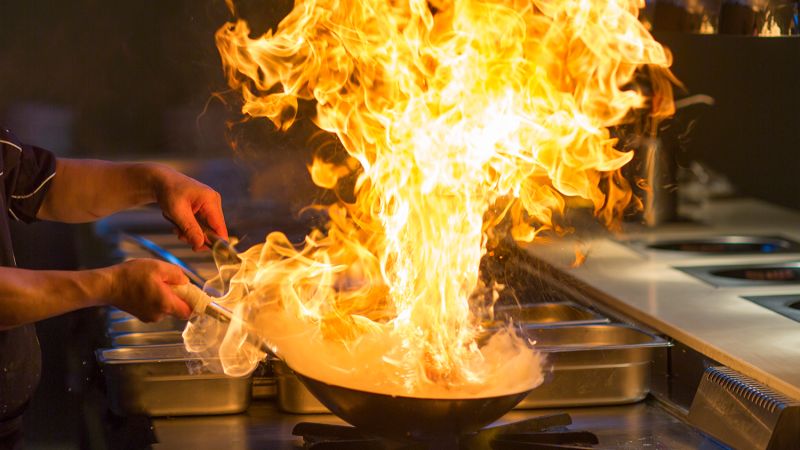

Conduct a Fire Risk Assessment:
Before anything else, assess the fire risks specific to your restaurant. Identify potential hazards, such as kitchen appliances, electrical equipment, flammable materials, and exit routes.
Comply with Fire Safety Regulations:
Familiarize yourself with local fire safety regulations and building codes. Ensure that your restaurant meets all the required fire prevention and protection safety standards.
Install Fire Safety Equipment:
Equip your restaurant with fire safety devices, including fire extinguishers, smoke alarms, sprinkler systems, fire blankets, and emergency lighting. Place them strategically in areas where fires are more likely to occur.
Designate Fire Exits:
Mark and maintain fire exits that lead directly to safe outdoor areas. Ensure that these exits are unobstructed at all times. Conduct regular drills to practice emergency evacuations.
Train Employees:
Properly train your staff in fire safety procedures, including using fire extinguishers and responding to fire emergencies. Regularly conduct fire drills to reinforce their knowledge.
Establish Communication Protocols:
Create a communication plan for fire emergencies. Ensure that employees know how to notify everyone in the restaurant about the fire and how to call emergency services.
Implement Kitchen Safety Measures:
Since the kitchen is a high-risk area for fires, take extra precautions. Install automatic fire suppression systems for cooking equipment like grills and fryers. Train kitchen staff in handling grease fires and other kitchen-related fire hazards.
Store Flammable Materials Safely:
Keep flammable materials, such as cleaning supplies and cooking oils, away from potential ignition sources in appropriate storage areas.
Regular Inspections and Maintenance:
Schedule routine inspections of fire safety equipment, electrical systems, and other potential hazards.
Emergency Contact Information:
Post emergency contact information, including the local fire department and hospital.
Create an Evacuation Plan:
Develop a clear evacuation plan and ensure all employees know it. Designate assembly points as well.
Inform Customers:
Display fire safety signs throughout the restaurant to educate customers.
Regular Fire Safety Training and Drills:
Conduct regular fire safety training sessions and drills to keep employees prepared and aware of potential fire hazards.
Stay Updated:
Keep abreast of any changes in fire safety regulations and update your fire plan accordingly.
Test the Fire Plan:
Once your fire plan is in place, conduct a test run to identify any weaknesses or areas that need improvement. Make the necessary adjustments based on the results.
Developing a fire plan for a new restaurant startup is essential to ensure the safety of customers, employees, and the property itself. Here’s a step-by-step guide to creating a comprehensive fire plan: